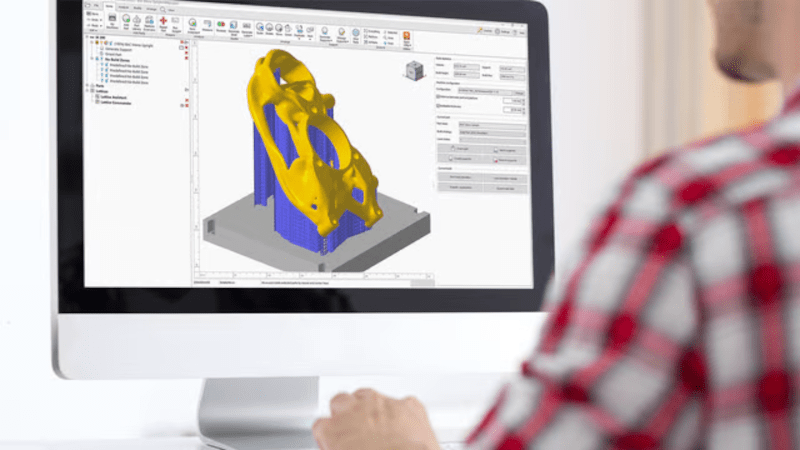It is no secret that the way you build things in your garage is rarely how big companies build things at scale. But sometimes new techniques on the production floor leak over to the hobby builder and vice versa, so it pays to keep an eye on what the other side is doing. Maybe that was the idea behind [Carolyn Schwaar’s] post on All3DP entitled “Beyond Cura Slicer: 3D Printing Build Prep Software for Pros.” In it, she looks at a few programs that commercial-grade 3D printers use for slicing.
The differences in the software we typically use and those meant to work with a dedicated high-end machine are pretty marked, but maybe not in the way you would expect. While you might expect them to have tight integration with their target machine, you might not expect that they usually offer less control over parameters than a product like Cura. As a quote in the post points out, Cura has over 400 settings. Commercial 3D printers don’t have time to tweak those settings endlessly. So the emphasis is more on canned profiles that just work.
Not all of the programs are tied to machines, though. Commercial CAD offerings are becoming more capable with 3D printers and can sometimes slice and send jobs to printers directly. Regardless of software type, though, everyone needs certain functions: design, repair, simulation, build plate layout, and more.
If you are looking for a hobby-grade slicer other than Cura, we’ve been using SuperSlicer which is a fork of PrusaSlicer, which is a fork of Slic3r lately.

















The fancy commercial slicers really are terrible. I use Cura at home, and have used the Stratasys GrabCAD slicer at work, the former is far better, the latter insists on dreadfully over-strength support strut used in excessive quantities and doesn’t give any access to useful settings, atleast not with the latest I encountered in 2021. Work are gradually replacing fancy proprietary slicer’d printers with types that can be made to run from Cura, once you have a good Cura profile for a machine you can use it just a turn-key as you can the proprietary ones, the difference is that with Cura he “good profile” can genuinely be good.
GrabCAD print is “ok” the real magic is in Insight, which despite liking like it is from the late 90s, still runs circles around any other slicer I’ve used.
I agree. Stratasys was hyping GrabCAD pretty hard so I tried it and found it worse than Catalyst. I found a procedure online to use Insight with my Dimension printer and it’s amazing how capable Insight is. No screwing around with a ton of settings – it just works.
Grabcad works 99.99% of the time.
What home shop people, and even people with access to one real printer don’t realize is that when you’re running a bunch of industrial printers uptime is more important than material cost.
Insight/control center is great if you have the time, but the cost in time spent to save material is not normally worth it.
I haven’t used a desktop slicer since gru makerware
After watching this one would imagine tight integration is necessary to accommodate quirks not only of the manufacturing process but of the machine itself.
https://youtu.be/OIevZ-Css7A
really happy with Prusa/Superslicer.
I work professionally with Stratasys printers using GrabCAD Print. Frankly, it’s pretty shit. We’re much happier with our fleet of “hobby” grade printers running PrusaSlicer.
Now, slicing software for DMP machines is another story…
For actual industrial applications constantly changing settings causes inconsistent parts.
Slicing in grabcad will always have the same result and is preferable in industry most of the time
Superslicer all day
I use an older version of Cura where it’s simple to muck with the settings directly, before they changed it more to ‘pick something off our list’ like filament type and so on.
I tried Slic3r a couple years ago and it was so slow that it took seconds to rotate/render the model to be sliced that it was just unusable for me. I stayed with Cura.